CONTENT
West Africa before the European slave trade
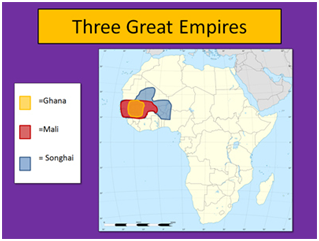 A map depicting the three most well-known West African Kingdoms. Image source
A map depicting the three most well-known West African Kingdoms. Image source
The peoples of West Africa had a rich and varied history and culture long before European slaver traders arrived. They had a wide variety of political arrangements including kingdoms, city-states and other organisations, each with their own languages and culture. The empire of Songhai and the kingdoms of Mali, Benin and Kongo were large and powerful with monarchs heading complex political structures governing hundreds of thousands of subjects. In other areas, political systems were smaller and weaker, relying on agreements between people at village level. As in 16th century war-torn Europe, the balance of power between political states and groups was constantly changing.
Art, learning and technology flourished and Africans were especially skilled in subjects like medicine, mathematics and astronomy. The same can be said regarding domestic goods; they made fine luxury items in bronze, ivory, gold and terracotta for both local use and trade. West Africans had traded with Europeans through merchants in North Africa for centuries. The first traders to sail down the West African coast were the Portuguese in the 15th century. Later the Dutch, British, French and Scandinavians followed. They were mainly interested in precious items such as gold, ivory and spices, particularly pepper. From their first contacts, European traders kidnapped and bought Africans for sale in Europe. However, it was not until the 17th century, when plantation owners wanted more and more slaves to satisfy the increasing demand for sugar in Europe that transatlantic slave trade became the dominant trade.
The nature of slavery in West Africa before Europeans
The nature and extent of slavery in Africa before the Atlantic Slave Trade is difficult to determine due to a lack of reliable statistical data. Many historians suggest that slavery as practiced in different areas in Africa was not the same as "chattel slavery". Chattel slavery was practiced in the America’s and saw human beings traded as mere property. These ‘chattel slaves’ had no rights and their children were automatically born into slavery.
Systems of slavery had existed in Africa (as well as throughout the world) before the transatlantic slave trade. However, the extent and the brutality of the European exploitation of Africa was unique. The best estimates by historians suggest that approximately 12 million Africans were forcibly transported from their homes across the Atlantic. There is clear evidence of very sophisticated African cultures from many thousands of years ago as shown by the Egyptians. There were many other powerful kingdoms and centres of learning throughout Africa over many centuries, including the kingdoms of Mali, Songhay, Benin and the Asante, all built on wealth from mining gold. In spite of the evidence, Europeans justified enslaving African people by describing them as ‘savages’, ‘uncivilised’ and even ‘subhuman’.
Slavery in the American south
Plantations: tobacco, rice, sugar cane and cotton
The agriculture system of plantations was implemented in the Southern Colonies during Colonial Times. The five Southern Colonies that introduced the system of plantations were composed of the Maryland Colony, the Virginia Colony, the North Carolina Colony, the South Carolina Colony and the Georgia Colony. The reason that plantations sprang up in the South was due to the geography and climate of the Southern colonies areas. The geography of the Southern Colonies featured fertile soil, hilly coastal plains, forests, long rivers and swamp areas. Mild winters and hot, humid summers made it possible to grow crops throughout the year and were ideally suited for plantations.
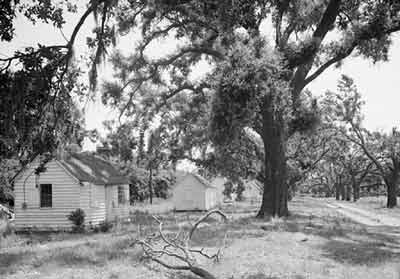 A picture depicting the slave quarters on the McLeod Plantation in Charleston. Image source
A picture depicting the slave quarters on the McLeod Plantation in Charleston. Image source
The tobacco plantations were the first to emerge. Tobacco was the most important cash crop but the volatility of tobacco prices encouraged the planters to diversify and different types of slave plantations were established. Slave plantations included the rice plantations, cotton plantations, and indigo plantations.
Tobacco was the first plantation crop raised by the Southern colonies. The tobacco industry produced tobacco which was originally used for pipes and snuff. The first Southern plantations were worked by indentured servants; the massive sizes of the plantations needed more and more labour. Work on the tobacco plantations required slaves. The process of growing tobacco required all year attention. Seeds were first grown in flats and then the seedlings were planted by laborious digging in the fields. Tobacco was harvested in the late summer and then had to be dried “cured” in a tobacco house for six weeks. The tobacco leaves were then stripped from the stems and packed into hogsheads (round, wooden casks or barrels) used to hold tobacco for shipment. Tobacco became the biggest of all the trade exports during the Colonial period and tobacco plantations were highly profitable.
Cotton was not grown on Southern plantations until 1793 when Eli Whitney invented the cotton gin which made the production of cotton more profitable. Cane sugar was first imported to the 13 colonies from British West Indies. However, after the United States purchased the Louisiana Territory from France in 1803, slave plantation owners also began growing sugar cane in addition to indigo on their plantations.
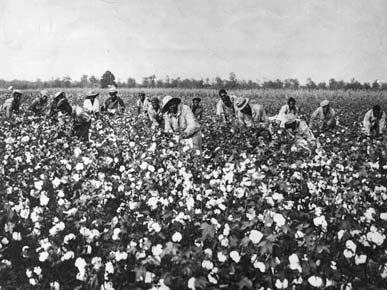 Cotton Sharecroppers on an Alabama plantation around the 1930's. Image source
Cotton Sharecroppers on an Alabama plantation around the 1930's. Image source
Rice was a particularly difficult crop to cultivate but the owners of the slave plantations in the Southern colonies mastered its culture by following the example of rice cultivation in Africa with information provided by their African slaves. The English and European colonists during the Colonial period had no practical experience of rice crops and the production of rice required its workers on the rice plantations to possess knowledge of the land and how to cultivate. The slaves provided sufficient labour force to produce the demanding crop on the rice plantations. In Delaware alone swampland covered over 30,000 acres. The swampland first had to be cleared. The construction of rice fields to create the rice plantations was a burdensome task. Sowing the rice seedlings was generally undertaken by female slaves on the rice plantations who trampled the seeds into the swampy soil with their bare feet. The rice fields were flooded at certain times of the year, and then drained back out. By the 1690's and rice became the mainstay of the colonies of Georgia and South Carolina. The cultivation of highly lucrative rice quickly spread to all of the slave plantations in the Southern colonies and rice became one of the top ten trade exports to England during the Colonial period of American history.
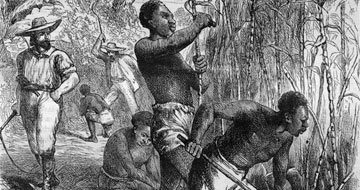 An artist's impression of work conducted in the sugar cane fields. Image source
An artist's impression of work conducted in the sugar cane fields. Image source
Cane sugar was first imported to the 13 Southern colonies from the West Indies. However, after the US purchased the Louisiana Territory from France in 1803, the plantation owners followed the French lead and also began growing sugar cane on their plantations. The first years of sugar cane harvesting in Louisiana produced 300,000 tons of sugar per year, making it a profitable crop for the slave plantations of the southern colonies.
Sugarcane is a tropical grass that forms shoots at the base producing multiple stems. Sugarcane usually grows three to four meters high and is about five centimetres in diameter. The sugar cane stems grow into cane stalk from which the sugar is extracted. Another product of sugar cane is molasses which is used to produce rum, a major trade export of the Northern colonies. Sugar cane is best grown on relatively flat, fertile land. The early sugar plantations extensively used of slaves because sugar was considered a cash crop exhibiting economies of scale in its cultivation. Sugar was most efficiently grown on the existing large slave plantations of the South. The construction of sugar cane fields to create the sugar plantations was a burdensome task.
Reasons for using slave labour
Slavery expanded as trade and industry increased. This increase created a demand for a labour force to produce goods for export, while slaves did most of the work. The European demand for New World cash crops, especially sugar, tobacco, rice, and cotton, led to a demand for labour to cultivate these crops. Although indentured servitude and Indian enslavement had been tried, New World planters quickly came to favour enslaved Africans due to demographic reasons. They were not only well-suited to tropical climates, but also brought special skills and husbandry knowledge for crops such as rice, which Europeans found useful. Epidemic diseases reduced the native population by between 50 percent and 90 percent. The labour supply was insufficient to meet demand. Africans were experienced in intensive agriculture and raising livestock and knew how to raise crops like rice that Europeans were unfamiliar with. Hence, slavery and the slave trade became an integral part of expanding and developing the commercial empire in the Atlantic world that peaked in the nineteenth century.
How slaves were captured, sold and transported from West Africa
During the fifteenth and sixteenth centuries, European traders got involved in the Slave Trade. They had previously been interested in African nations and kingdoms, such as Ghana and Mali, due to their sophisticated trading networks. Traders then wanted to trade in human beings. They took enslaved people from western Africa to Europe and the Americas. At first this was on quite a small scale but the Slave Trade grew during the seventeenth and eighteenth centuries, as European countries conquered many of the Caribbean islands and much of North and South America.
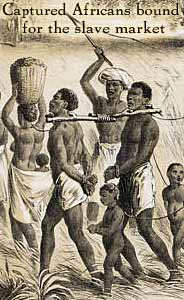 A picture illustrating how slaves were bound and transported to the slave markets where they would wait to be sold. Image source
A picture illustrating how slaves were bound and transported to the slave markets where they would wait to be sold. Image source
The main methods of enslaving Africans were warfare, raiding and kidnapping. People were also enslaved through judicial processes, debt, and in regions with unstable rainfall levels, through drought and famine. The degree of violence involved in enslaving people varied between regions and through time. Warfare was a common source of slaves in Senegambia, the Gold Coast, the Slave Coast (Bight of Benin) and Angola. Raiding and kidnapping seemed to have predominated in the Bight of Biafra, from where Equiano was exported.
Slave forts were established all along the coast of West Africa, to house captured Africans in holding pens (barracoons) awaiting transport. They were equipped with up to a hundred guns and cannons to defend European interests on the coast. There were approximately 80 castles located along the slave-trading coast. The forts had the same basic design, with narrow windowless stone dungeons for captured Africans and fine European residences.
Slave markets
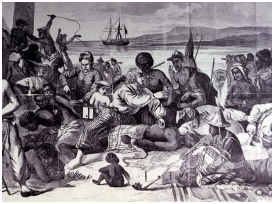 A slave market on the Kambia River, Coast of Africa. Image source
A slave market on the Kambia River, Coast of Africa. Image source
Crops grown on these plantations such as tobacco, rice, sugar cane and cotton were labour intensive. Planters therefore began to purchase slaves. At first these came from the West Indies but by the late 18th century they came directly from Africa. Busy slave-markets were established in Philadelphia, Richmond, Charleston and New Orleans. Typically, when a slave owner ran out of work, they hired their slaves out at half the rate of free labour. On December 13, 1711, the City Council passed a law “that all Negro and Indian slaves that are let out to hire…be hired at the Market house at the Wall Street Slip…” This market, known as the Meal Market (because grains were sold there), was located at the foot of Wall Street on the East River. By the time the slaves reached the coast, they had already undertaken a long journey from inland. They were often bought and sold several times along the way.
Numbers of slaves that were taken to America
The first European nation to engage in the Transatlantic Slave Trade was Portugal in the mid to late 1400's. Captain John Hawkins made the first known English slaving voyage to Africa, in 1562, in the reign of Elizabeth 1. Hawkins made three such journeys over a period of six years. He captured over 1200 Africans and sold them as goods in the Spanish colonies in the Americas. In the 245 years between Hawkins first voyage and the abolition of the Slave Trade in 1807, merchants in Britain despatched about 10,000 voyages to Africa for slaves, with merchants in other parts of the British Empire perhaps fitting out a further 1,150 voyages. Historian, Professor David Richardson, has calculated that British ships carried 3.4 million or more enslaved Africans to the Americas. Only the Portuguese, who carried on the trade for almost 50 years after Britain had abolished its Slave Trade, carried more enslaved Africans to the Americas than the British (the most recent estimate suggests just over 5 million people). Estimates, based on records of voyages in the archives of port customs and maritime insurance records, put the total number of African slaves transported by European traders, to at least 12 million people. The first record of enslaved Africans being landed in the British colony of Virginia was in 1619. Barbados became the first British settlement in the Caribbean in 1625 and the British took control of Jamaica in 1655.
Some historians estimate that more than 15 million Africans were forced to leave Africa to cross the Atlantic to be sold into slavery. In addition, millions of other Africans lost their lives during slave raids or during their forced removal to coastal forts where they would be transported to the Americas.
Another source states that between the 16th and 19th centuries more than 13 million slaves were produced in Africa and transported across the Atlantic. 77 percent of these slaves (10.1 million) were produced along the West and West Central coasts of Africa during the 150 years between 1701 and 1850. In 1700, the estimated population in this region of Africa was 28 million people.
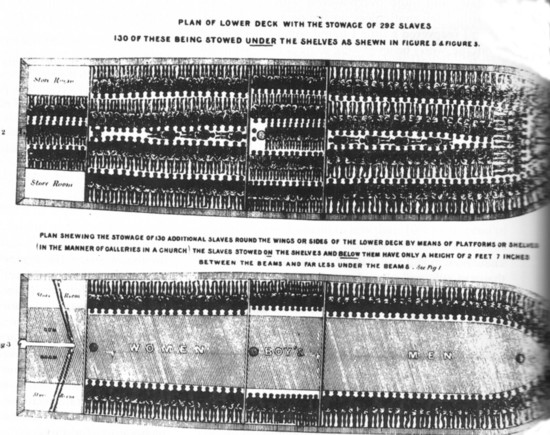 The layout of slave ships with a description that reads: Plan of lower deck with the storage of 292 slaves, 130 of these being stored under the shelves. Image source
The layout of slave ships with a description that reads: Plan of lower deck with the storage of 292 slaves, 130 of these being stored under the shelves. Image source
The layout of slave ships with a description that reads: "Plan of lower deck with the storage of 292 slaves, 130 of these being stored under the shelves".
What happened to the raw materials that slaves produced?
The productivity of slave labour is undeniable. The benefit to European nations from new crops, especially sugar, owed its development and expansion to the labour of African slaves, at the expense of Africa and the slaves themselves. Family farms using slaves could increase their output and their income, which allowed them to buy more land and more slaves to increase production even further. As a result, slaves grew most of the cotton, as well as the other southern staple crops such as, tobacco, rice, and sugar. The largest plantation slave labour force numbered in the tens or hundreds. Slave labour provided the raw material for New England's textile mills, helping stimulate the nation's early industrialization. Slave-produced commercial crops required a host of middlemen to sell and transport them to markets and to finance and supply the slave-owning planters.
The impact of the transatlantic slave trade on slaves
What it was like to be a plantation slave in the American South?
Slave culture in songs and stories
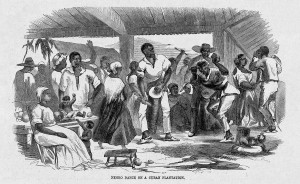 Slaves engaging in song and dance. This can be considered as the start of different music genres such as jazz and blues. Image source
Slaves engaging in song and dance. This can be considered as the start of different music genres such as jazz and blues. Image source
Slaves made music and dance vital components of their worship practices. Enslaved men and women kept the rites, rituals, and cosmologies of Africa alive in America through stories, healing arts, song, and other forms of cultural expression, creating a spiritual space apart from the white European world. Some enslaved Africans became skilled artisans and well educated, working alongside white plantation owners and artisans in trades as diverse as cattle ranching and translation. Modern Caribbean and African American cultures still carry the legacy of this period and reflect it in music such as calypso, and folk stories such as those of Brer Rabbit or Anansi. Stories and songs from Africa have been passed down through generations in America and the Caribbean, for example by the Gullah people.
Resistance to slavery: individual responses, (sluggishness, passivity, indifference, shirking, alcoholism, flight, suicide, arson, murdering owners)
Resistance took many forms, from individual acts of sabotage, poor work, feigning illness, or committing crimes like arson and poisoning to escaping the system altogether by running away to the North. There were also cases of direct rebellions. American plantations were far smaller than those in other parts of the Western Hemisphere, which meant they also had a smaller slave population. This resulted in slave rebellions that were smaller and less frequent than in Brazil and the West Indies.
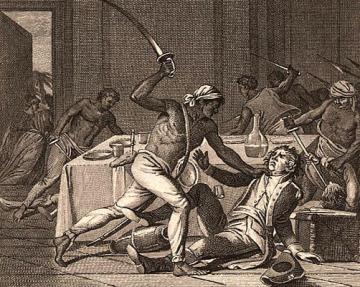 An illustration depicting a slave fighting back at his owner as a form of resistance. Image source
An illustration depicting a slave fighting back at his owner as a form of resistance. Image source
The colonial era witnessed two significant slave rebellions. In 1712, some twenty-five slaves armed themselves with guns and clubs and set fire to houses on the northern edge of New York City. They killed the first nine whites who arrived on the scene and then they were killed or captured by soldiers. In the aftermath, eighteen participants were executed in the most brutal manner (individuals were burned alive, broken on the wheel, and subjected to other tortures). The event set a pattern for subsequent uprisings. The violence of the retribution far exceeded the mayhem committed by the rebelling slaves.
A second uprising, Cato’s Conspiracy, had originated in Stono, South Carolina, in 1739. England at this time was at war with Spain, and a group of about eighty slaves took up arms and attempted to march to Spanish Florida, where they expected to find refuge. A battle ensued when they were overtaken by armed whites. Some forty-four blacks and twenty-one whites were killed.
Running away was another form of resistance. Slaves who ran away most often did so for a short period of time. These runaway slaves hid in nearby forests or visited a relative or spouse on another plantation. They did so to escape a harsh punishment that had been threatened, to obtain relief from a heavy workload, or just to escape the hard work of everyday life under slavery. The most common form of resistance available to slaves was what is known as “day-to-day” resistance, or small acts of rebellion. This form of resistance included sabotage, such as breaking tools or setting fire to buildings. Striking out at a slave owner's property was a way to strike at the man himself, albeit indirectly. Other methods of day-to-day resistance were feigning illness, playing dumb, or slowing down work. Both men and women faked being ill to gain relief from their harsh working conditions. Women may have been able to feign illness more easily; they were expected to provide their owners with children, and at least some owners would have wanted to protect the childbearing capacity of their female slaves. Slaves could also play on their masters' and mistresses' prejudices by seeming to not understand instructions. When possible, slaves could also decrease their pace of work.
Rebellion against slavery
From the earliest days of slavery, resistance was a constant feature of slavery. It took many forms, from individual acts of sabotage, poor work, feigning illness, or committing crimes like arson and poisoning to escaping the system altogether by running away to the North. Gabriel Prossey's conspiracy in 1800, Denmark Vesey's plot in 1822, and Nat Turner's Rebellion in 1831 are the most prominent slave revolts in American history. But only the Stono Rebellion and Nat Turner's Rebellion achieved any success; white Southerners managed to derail the other planned rebellions before any attack could take place.
Nat Turner’s revolt 1831
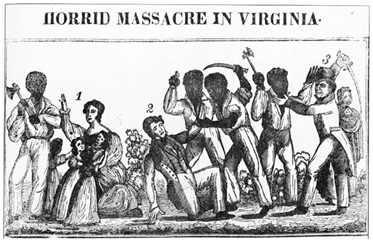 A poster depicting what happened during the Nat Turner Revolt in 1831. Image source
A poster depicting what happened during the Nat Turner Revolt in 1831. Image source
Nathanial “Nat” Turner was a black American slave who led the only effective, sustained slave rebellion in August 1831 in American history. This revolt took place on an area of small farms rather than large plantations. Spreading terror throughout the white South, his action set off a new wave of oppressive legislation prohibiting the education movement and the assembly of slaves. It also stiffened proslavery and anti- abolitionist convictions that persisted in that region until the American Civil War. He was born on the Virginia plantation of Benjamin Turner, who allowed him to be instructed in reading, writing, and religion. Sold three times in his childhood and hired out to John Travis, he became a fiery preacher and leader of African-American slaves on Benjamin Turner’s plantation and in his Southampton County neighbourhood, claiming that he was chosen by God to lead them from bondage.
In August 1831 Turner and five followers met and without a plan or a clear objective, launched their rebellion. For twelve hours, they moved from farm to farm, killing every white person they encountered. By the time the militia suppressed the uprising, nearly eighty slaves had joined the rebellion, and sixty whites lay dead. A wave of terror swept over the area. Scores of innocent blacks were murdered by bands of vigilantes. Turner himself escaped, remained at large for several weeks, and was finally captured and executed.
Joseph Cinqué and the Amistad mutiny 1839
Amistad mutiny, (July 2, 1839), slave rebellion that took place on the slave ship Amistad near the coast of Cuba and had important political and legal repercussions in the American abolition movement. The mutineers were captured and tried in the United States, and a surprising victory for the country’s antislavery forces resulted in 1841 when the U.S. Supreme Court freed the rebels. A committee formed to defend the slaves later developed into the American Missionary Association (incorporated 1846). On July 2, 1839, the Spanish schooner Amistad was sailing from Havana to Puerto Príncipe, Cuba, when the ship’s unwilling passengers, 53 slaves recently abducted from Africa, revolted. Led by Joseph Cinqué, they killed the captain and the cook but spared the life of a Spanish navigator, so that he could sail them home to Sierra Leone. The navigator managed instead to sail the Amistad generally northward. New England abolitionist Lewis Tappan stirred public sympathy for the African captives, while the U.S. government took the proslavery side.
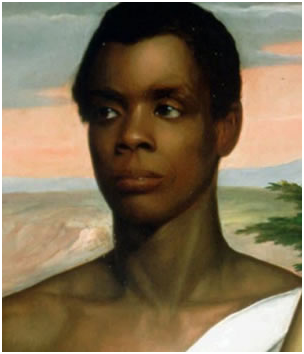 Sengbe Pieh, also known as Joseph Cinque. Image source
Sengbe Pieh, also known as Joseph Cinque. Image source
Prosecutors argued that, as slaves, the mutineers were subject to the laws governing conduct between slaves and their masters. But trial testimony determined that while slavery was legal in Cuba, importation of slaves from Africa was not. Therefore, the judge ruled, rather than being merchandise, the Africans were victims of kidnapping and had the right to escape their captors in any way they could. When the U.S. government appealed the case before the U.S. Supreme Court the next year, congressman and former president John Quincy Adams argued eloquently for the Amistad rebels. The Supreme Court upheld the lower court, and private and missionary society donations helped the 35 surviving Africans secure passage home. They arrived in Sierra Leone in January 1842, along with five missionaries and teachers who intended to establish a Christian mission.
Spain continued to insist that the United States pay indemnification for the Cuban vessel. The U.S. Congress intermittently debated the Amistad case, without resolution, for more than two decades, until the American Civil War began in 1861.
The Underground Railroad (an informal network of secret routes and safe houses used by escaping slaves)
The Underground Railroad was the term used to describe a network of persons who helped escaped slaves on their way to freedom in the northern states or Canada. It got its name because its activities had to be carried out in secret, using darkness or disguise, and because railway terms were used by those involved with the system to describe how it worked. Routes were known as lines and stopping places were called station. Those who aided along the way were conductors and their charges were known as packages or freight. The network of routes extended through 14 Northern states and “the promised land” of Canada, beyond the reach of fugitive-slave hunters. Those who most actively assisted slaves to escape by way of the “railroad” were members of the free black community. The most active of the Railroad workers were northern free blacks, who had little or no support from white abolitionists.
Harriet Tubman: slave who escaped to freedom, and helped other slaves to escape
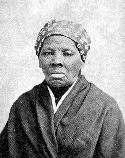 An 1895 portrait of Harriet Tubman. Image source
An 1895 portrait of Harriet Tubman. Image source
Harriet Tubman became famous as a leader of the Underground Railroad during the turbulent 1850s. Born a slave on Maryland’s eastern shore, she endured the harsh existence of a field hand, including brutal beatings. In 1849 she fled slavery, leaving her husband and family behind in order to escape. Despite a bounty on her head, she returned to the South at least 19 times to lead her family and hundreds of other slaves to freedom via the Underground Railroad. Tubman also served as a scout, spy and nurse during the Civil War. Harriet Tubman escaped from slavery in 1849, fleeing to Philadelphia. Tubman decided to escape following a bout of illness and the death of her owner in 1849. Tubman feared that her family would be further severed, and feared for own her fate as a sickly slave of low economic value. She initially left Maryland with two of her brothers, Ben and Henry, on September 17, 1849. A notice published in the Cambridge Democrat offered a $300 reward for the return of Araminta (Minty), Harry and Ben. Once they had left, Tubman’s brothers had second thoughts and returned to the plantation. Harriet had no plans to remain in bondage. Seeing her brothers safely home, she soon set off alone for Pennsylvania. Tubman made use of the network known as the Underground Railroad to travel nearly 90 miles to Philadelphia. Becoming friends with the leading abolitionists of the day, Tubman took part in antislavery meetings.
The story of John Brown and his mission to abolish slavery
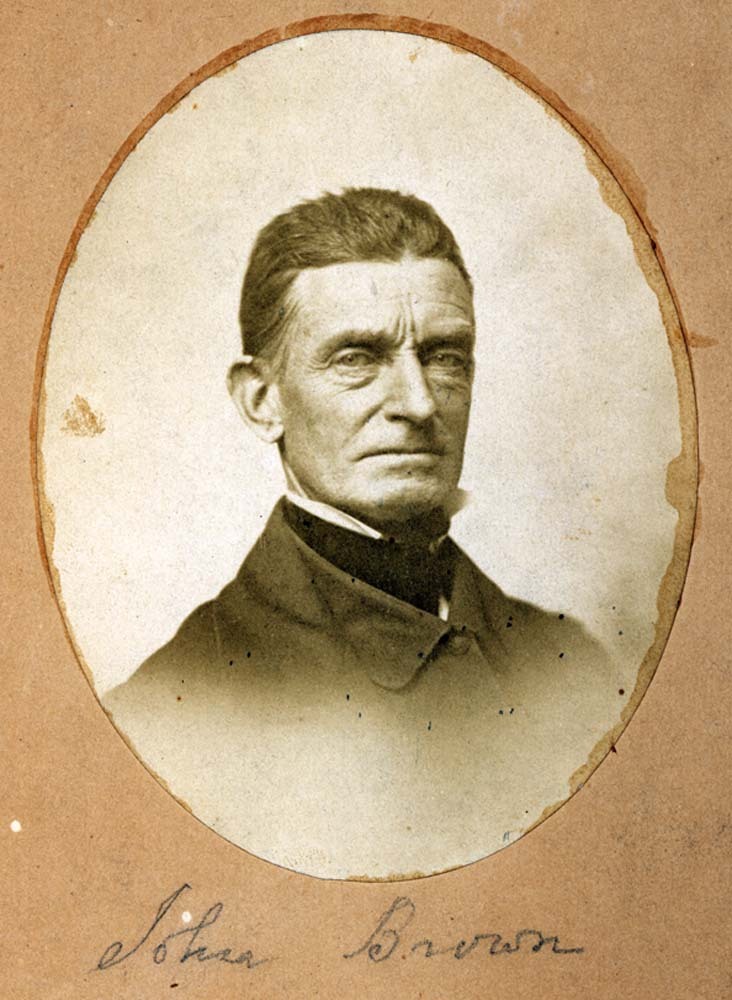 A signed photograph of John Brown. Image source
A signed photograph of John Brown. Image source
John Brown was a radical abolitionist who believed in the violent overthrow of the slavery system. During the Bleeding Kansas conflicts, Brown and his sons led attacks on pro-slavery residents. Justifying his actions as the will of God, Brown soon became a hero in the eyes of Northern extremists and was quick to capitalize on his growing reputation. By early 1858, he had succeeded in enlisting a small “army” of insurrectionists whose mission was to foment rebellion among the slaves. In 1859, Brown and 21 of his followers attacked and occupied the federal arsenal in Harpers Ferry. Their goal was to capture supplies and use them to arm a slave rebellion. Brown was captured during the raid and later hanged, but not before becoming an anti-slavery icon.
The impact of the transatlantic slave trade on the economies of:
West Africa
Portuguese merchants traded with Africans from trading posts they set up along the coast. They exchanged items like brass and copper bracelets for such products as pepper, cloth, beads and slaves, all part of an existing internal African trade. The negative impact of the international slave trade on Africa was immense. It can be seen on the personal, family, communal, and continental levels. In addition to the millions of able-bodied individuals captured and transported, the death toll and the economic and environmental destruction resulting from wars and slave raids were startlingly high. In the famines that followed military actions, the old and very young were often killed or left to starve. Social relations were restructured and traditional values were subverted. The slave trade resulted in the development of predatory regimes, as well as stagnation or regression. Many communities relocated as far from the slavers' route as possible. The slave trade also slowed population growth in Africa and may have even reduced the aggregate population between 1700 and 1850.
Although the slave trade had a generally negative impact on African economies, Whatley and Gillzeau provide evidence that suggests that the slave trade actually altered the path of development of African economies. They suggested that that the international slave trade did alter resource allocation in Africa, because as the foreign demand for enslaved Africans increased, Africans responded by capturing and exporting more people. It seems that the period between the sixteenth and nineteenth centuries was a time of economic stagnation for Africa, which fell further and further behind the economic progress of Europe as the years passed by. Little wonder, then, that some historians interpret this as a sign that the Atlantic trade was seriously retarding Africa's economic development.
America and Britain
Only ten percent of the slaves imported from Africa came to the United States where slavery was maintained through natural reproduction among the slave population as opposed to the constant supply of new slaves from Africa; the other ninety per cent were disbursed throughout the America’s; nearly half went to Brazil alone. In the Americas, the transatlantic slave trade caused a significant change which can be summarised in three main points: Large amounts of land had been seized from Native Americans and were not being used; Europeans were looking for somewhere to invest their money and very cheap labour was available in the form of enslaved Africans. The Americas became a booming new economy.
The love of sugar that developed in Britain and other European populations meant the demand for sugar could only be met by the expansion of the slave trade to keep the plantations busy. Conditions were terrible for enslaved Africans on these plantations. At its worst so many enslaved workers died that whole populations needed to be replaced each decade. By the 1760s annual exports from the West Indies alone to Britain were worth over £3m (equivalent to around £250m today). Individuals made large profits; for instance the merchant Thomas Leyland, three times mayor of Liverpool, made a profit of £12,000 (about £1m today) on the 1798 voyage of his ship Lottery. The British cotton mills, which became the emblem of the "Industrial Revolution", depended on cheap slaved-produced cotton from the New World; cotton would have been more costly to obtain elsewhere. British consumers also benefited from other cheap and plentiful slaved-produced goods such as sugar. The profits gained from the slave trade gave the British economy an extra source of capital. Both the Americas and Africa, whose economies depended on slavery, became useful additional export markets for British manufactures. Certain British individuals, businesses, and ports prospered on the basis of the slave trade.
Gains for America and Britain and negative impact on West Africa
The trade gave employment not only to huge numbers of sailors, but it spawned jobs in a host of local industries in the port itself and also far into the hinterland. Despite the prominence of Liverpool; Bristol and London, and many other British ports profited from some involvement in the slave trade. Some, like Glasgow benefited through the importation of slave produce, others, like Whitehaven in Cumbria and Lancaster benefited from direct trafficking in human lives. Between them, these two ports accounted for more than 43,000 enslaved Africans being taken out of Africa. Ships that carried slaves into Britain operated from most of Europe's major ports, though by the late 18th century, quite a few were based in the slave ports of the Americas, notably Newport, Rhode Island and Rio de Janeiro in Brazil. In Britain, the trade was, by turns, dominated by London, Bristol and Liverpool. In Europe, transatlantic slavery had contributed significantly to economic development. It stimulated the processing and manufacturing industries and enabled the production of some of the most sought-after raw materials and luxury items such as sugar, tobacco and cotton through the use of African labour. Even after Britain had abolished the trade in 1807, it continued to benefit from cotton produced by slave labour in the United States. After emancipation in 1833, a cheap source of labour was maintained in the Caribbean colonies. British manufacturers also continued to benefit from slave-produced products from Cuba and Brazil, and invested in the economies of these countries, which utilised slave labour until the end of the 19th century.
Before the Europeans arrived in Africa, Africa had vibrant economic, social and political structures. These were severely disrupted by Europeans to create wealth for themselves. The transatlantic slave trade encouraged Africans to wage war against one another and conduct raids, instead of building more peaceful links. Africa lost millions in population, those who would have been its main producers and consumers. Africa also increasingly lost its economic independence; its economies becoming geared to production for external markets and dictated by the demands of others. When economists look at African countries they generally find their economies are weak. There are regularly many economic signs of this, including a weak Gross Domestic Product (GDP, which measures the value of local production and its growth); the decrease of exported primary products and agricultural products; the use of outdated industrial machines; large amounts of national debt owed to richer countries; and the gap between rich and poor getting bigger and bigger. The Atlantic trade had its biggest impact in West Africa, which supplied the largest number of captives, although at the height of the trade many other parts of Africa were also used as a source for slaves. In addition, the trade had a disproportionate impact on the male population, because male slaves were the most sought after in the Americas. It is thought that roughly two-thirds of the slaves taken to the New World were male, and only one-third female.
